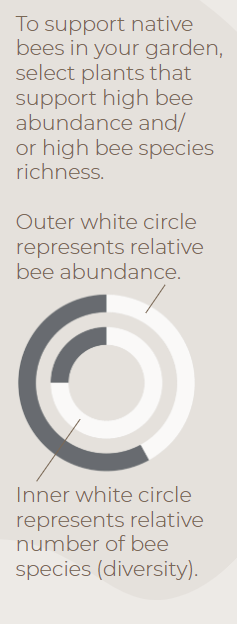The Garden Ecology Lab’s Pollinator Plant PR Campaign Presents….. California Poppy!
The Garden Ecology Lab is releasing a series of plant profiles of the top 10 Oregon native plants for pollinators, based on Aaron Anderson’s 2017-2019 field trials of 23 Oregon native plants. We will feature one plant per week for 10 weeks, this is week 9! Profiles will include photos, planting information, and will highlight common pollinators of each plant.

Plant Facts
- Scientific Name: Eschscholzia californica
- Life Cycle: Annual/Perennial
- Growth Habit: Clumping, sprawling
- Bloom Duration: Early Spring to Late Summer depending on seeding date.
- Hardiness Zone: 7-10
- Special Traits: Drought-tolerant, deer and rabbit resistant.
- When to plant: Seed in Fall for a Spring bloom, or seed in Spring for a mid-summer bloom.
Pollinator Facts
- California poppy only provides pollen to its insect visitors, but provides it in an abundance!
- Aaron’s study found California poppy to be associated with 4 species of sweat bees: Halictus farinosus, H. tripartitus, Lasioglossum dialictus sp. 5, L. olympiae, and a bumblebee: Bombus vosnesenskii.
- Other common visitors to California poppy include butterflies, specifically, acmon blue and mormon metalmark.

California Poppy’s Native Range in Oregon

Oregon's populations of California poppy are primarily found in the Willamette Valley and the Klamath Mountains as well as some parts of the Columbia River Gorge and the Coast Range. Maps and legend acquired from the Oregon Flora Project, with Imagery Sourced from Google. Copyright 2021© TerraMetrics
California poppy as a pollinator plant
California poppy’s range extends from Washington to northwest Baja California and east towards Arizona and southwest New Mexico. A popular flower for roadside plantings, California poppy survives well in average to poor soil that is well-draining. It survives mild-winters as an herbaceous perennial and reseeds itself readily. California poppy is an all-around easy pollinator plant to grow, and growing it pays off, as it attracts an incredible diversity and abundance of bees with its remarkable volumes of pollen.


Infographics developed by LeAnn Locher, Aaron Anderson, and Gail Langellotto.
Did you know?
California poppy’s petals are responsive to light! In the absence of light (at night and on cloudy days) petals spiral around each other and tighten to a close. In the presence of light, cells in the petals expand in response to the plant growth hormone auxin. This mechanism opens the petals allowing pollinators to access the flower’s pollen — although in the field we watch impatient bumblebees force their way into closed California poppy flowers to get to the pollen anyways.


Photos from the field
Tune in next week for the next edition of our Pollinator Plant PR Campaign.




